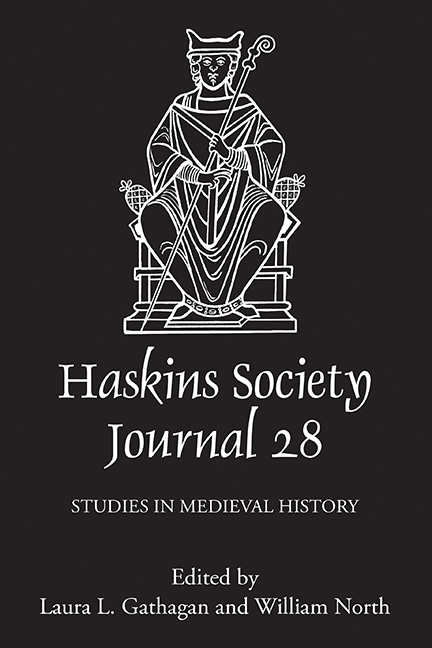Book contents
- Frontmatter
- Contents
- List of Figures and Tables
- Editors' Note
- Abbreviations
- 1 Under the ‘Romans’ or under the Franks? Venice between Two Empires
- 2 Lost and Found: Eadmer's De reliquiis sancti Audoeni as a Cross–Channel Solution to the Canterbury–York Dispute
- 3 Of Lost Libraries and Monastic Memories: Creating the Eleventh-Century Novalesa Miscellany
- 4 The Place of Henry I in English Legal History
- 5 ‘Goliath Thought David Rather Boastful’: Royal Masculinity in Kingless Societies
- 6 Well-Behaved Women? Agnès of Baudement and Agnès of Braine as Female Lords and Patrons of the Premonstratensian Order
- 7 ‘Videmus nunc per speculum’: The Mysticism and Naturalism of the Twelfth-Century imago mundi
- 8 The Norman Kings of Africa?
- 9 Punishing Adultery: Private Violence, Public Honor, Literature, and the Law
1 - Under the ‘Romans’ or under the Franks? Venice between Two Empires
Published online by Cambridge University Press: 23 August 2019
- Frontmatter
- Contents
- List of Figures and Tables
- Editors' Note
- Abbreviations
- 1 Under the ‘Romans’ or under the Franks? Venice between Two Empires
- 2 Lost and Found: Eadmer's De reliquiis sancti Audoeni as a Cross–Channel Solution to the Canterbury–York Dispute
- 3 Of Lost Libraries and Monastic Memories: Creating the Eleventh-Century Novalesa Miscellany
- 4 The Place of Henry I in English Legal History
- 5 ‘Goliath Thought David Rather Boastful’: Royal Masculinity in Kingless Societies
- 6 Well-Behaved Women? Agnès of Baudement and Agnès of Braine as Female Lords and Patrons of the Premonstratensian Order
- 7 ‘Videmus nunc per speculum’: The Mysticism and Naturalism of the Twelfth-Century imago mundi
- 8 The Norman Kings of Africa?
- 9 Punishing Adultery: Private Violence, Public Honor, Literature, and the Law
Summary
At the beginning of the ninth century, the Venetian duchy ran the risk of losing the autonomy that it had recently obtained from its former overlords, the Byzantine emperors. Charlemagne's conquest of the nearby Kingdom of the Lombards in 774 introduced a neighboring power that competed with, and in some ways threatened, its position in the Venetian lagoon. The Frankish ruler, indeed, proved more aggressive towards the Venetians than his predecessors had been. Since the Venetians theoretically remained within Constantinople's sphere of influence, and the Byzantine emperor accused Charlemagne of having usurped the imperial title in 800, rights to possession of this little area between the two empires became increasingly meaningful for all the parties implicated in the struggle between rival powers.
The great significance of the dispute for contemporary Venetians, Franks, and Byzantines comes to light in the three sources which focus on how these events transpired. Although scholars can benefit greatly from these sources, certain interpretive challenges persist. Each text provides a different version of similar episodes and many events included in one source are absent from others. The goal of this paper is to reconstruct the events surrounding the conflict by clearly setting out what the primary sources relate, and to provide an explanation of some of the motivations that may have led the authors of these sources to describe the events in the way they did.
The main sources concerning these events are a Frankish text called the Annales regni Francorum (‘Annals of the Kingdom of the Franks’), which is the only work contemporary with these events, and which conveys the Frankish court's point of view; a Byzantine source, entitled the De administrando imperio (‘On the Administration of the Empire’) written by Emperor Constantine VII (913–59); and a Venetian chronicle, the Istoria Veneticorum (‘History of the Venetians’), probably written by John the Deacon, chaplain and ambassador of the Venetian duke Peter II Orseolo (991–1008), at the beginning of the eleventh century. Although these are the main narrative sources for the events in question, there are other non-narrative sources that are useful for understanding Frankish actions against the Venetian duchy.
- Type
- Chapter
- Information
- The Haskins Society JournalStudies in Medieval History, pp. 1 - 14Publisher: Boydell & BrewerPrint publication year: 2017



